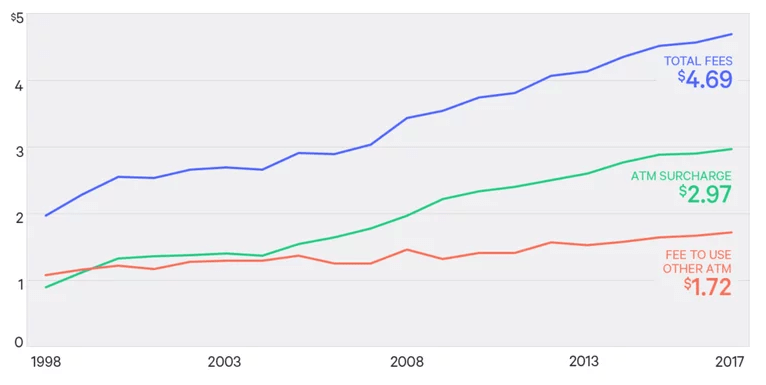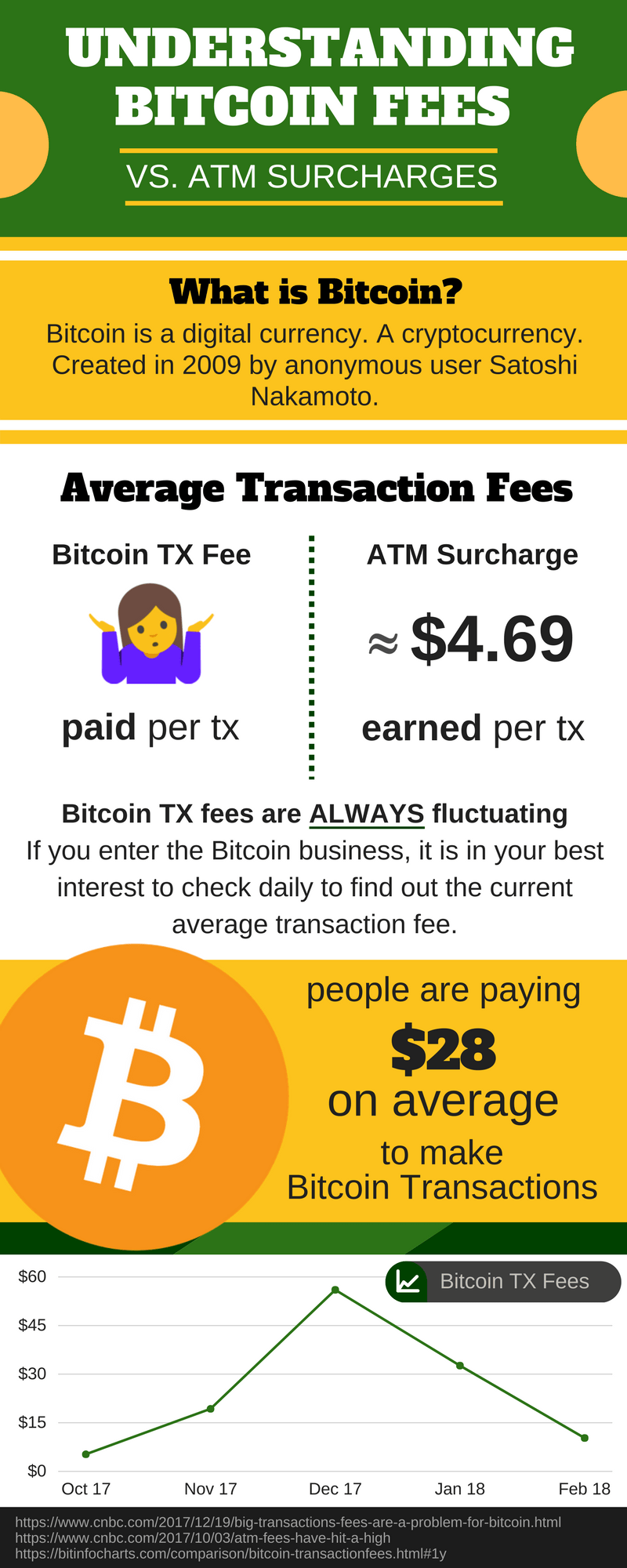Buying an ATM Business vs. Starting an ATM Business
Is buying an ATM machine business or starting an ATM machine business the best option? Are they even that different? If you want to make semi-passive income with ATM machines, these are two viable paths to take. In this article, we look at the ins and outs of each avenue of getting into the ATM business.
Buying an ATM Machine Business vs. Starting an ATM Machine Business: How They’re Similar
First, here is what you can expect from both routes. Essentially, you are looking for the same end result. And regardless of how you get there, here is what an ATM business looks like:
Regulatory Compliance
Your ATM business will need to comply with all financial regulations, banking laws, and standards. There’s no getting out of that.
Location Selection
No matter which path you take, the success of your ATM business is heavily dependent on the location. If your ATM machines are in high-traffic areas like convenience stores, malls, and tourist destinations, you will see more profit than in areas with less foot traffic.
Cash Management
You will also need to determine a vaulting procedure. Who will be responsible for loading the machine with cash and when? You will need a reliable process for loading and securing cash in your machines. Otherwise, you’re out of business until you’re stocked. And being out of business gives you a bad reputation which can affect future business.
Maintenance and Servicing
ATM machines require maintenance and servicing. They have to be cleaned, monitored for tampering, fixed when they experience error codes, etc. So part of owning ATM machines includes maintenance agreements, troubleshooting knowledge, and relationships with technicians and/or reliable support from an ATM processing partner.
Processing
Speaking of which, you’ve got to have processing partners. You will need to work with a company that can connect your ATM machines to the credit card networks. Otherwise they won’t work. Your machines cannot release funds to ATM users unless they can confirm that the funds are available. This requires communication over a secure, dedicated network.
Banking Relationship
Finally, you will need a banking relationship. If you handle your own vaulting, you will have to find a bank willing to work with you to provide the regular large cash withdrawals you will need to stock your machines. If you decide to hire a vaulting company to handle your cash needs instead, you will still need a business bank account to receive earnings and manage business transactions like maintenance expenses.
But while the operation of an ATM business looks the same whether you are buying an ATM machine business or starting one from scratch, startup will look very different. Next is what you can expect from each option.
Buying an ATM Machine Business: Important Terms
Before getting into specifics, there are some terms that are used when discussing multiple ATM machines under one operator.
Typically, when we help independent ATM deployers (IADs) get started in the ATM business, we walk them through the process of getting their first, single ATM machine placed, installed, and running. If you’re just getting started in the ATM business, it makes sense to start with just one machine.
Learn the ins and outs. Master the process. Then you can think about purchasing, placing, and operating more machines once you gain traction and maybe even steady revenue to invest in more machines.
When talking about more than one ATM machine, you might start to hear terms like “route” and “fleet”. In the ATM business context, these terms are related but not always interchangeable.
Route vs. Fleet
An ATM route refers to a set of ATM locations managed by an operator. It emphasizes the geographic distribution and operational structure of ATMs placed in multiple locations (e.g., a route of ATMs in gas stations, hotels, or convenience stores).
An ATM fleet refers to the group of ATMs owned and managed by a single operator, regardless of their locations. It focuses more on the machines themselves rather than their placement.
While people often use the terms interchangeably, “route” is more commonly used when discussing buying or selling an ATM business because it implies an existing network of profitable locations. “Fleet” is more general and often used in discussions about ATM inventory or expansion plans.
Simply, you might have a “fleet” of ATM machines, and they may or may not be sitting in your garage waiting to be placed. Or, you may have a “route” of ATM machines that you regularly monitor, stock, and actively operate.
However, when buying an ATM machine business, the seller could be referring to a route or a fleet. So keep that in mind when determining whether the asking price is fair. Expect to pay more for a route which will have an existing customer base and earn consistent revenue.
Buying an ATM Machine Business vs. Starting an ATM Machine Business: How They’re Different
Initial Investment
Typically, the initial investment will be higher when buying an ATM machine business. ATM businesses for sale will be calculating the value of the equipment itself as well as the revenue potential. There are a number of factors that can influence the cost of buying an ATM machine business. But, for example, a route of 40 ATM machines in Houston, Texas might go for $160,000 and estimate a $90,000 annual cash flow.
When you start your own ATM business, you can purchase as many ATM machines as you can afford. ATM equipment ranges anywhere from $1,000-$3,000 plus the startup cash (~$2,000-$3,000) to vault them.
The main difference is that the existing route that you may be purchasing is already in business. So you would save the time it takes to find locations and negotiate agreements.
Buying an ATM machine business requires a higher upfront investment, but it comes with existing revenue streams. Starting an ATM business can be cheaper upfront, but it requires more leg work: finding locations, negotiating contracts, developing a customer base, etc.
Revenue Generation
Similarly, buying an ATM machine business offers immediate cash flow from established locations. When you start your ATM business from the ground up, you have to build a client base and put in the effort to strategically place ATMs in profitable locations.
Operational Setup
Again, buying an ATM machine business comes with contracts, locations, and possibly a team in place already. Starting your own ATM business requires you to set everything up from scratch, including securing contracts.
Risk Level
You can typically expect the risk level to be lower when buying an ATM machine business as the business already has historical data. However, you have to be able to verify this for yourself or rely on the seller to provide accurate data. Be wary of sellers who are desperate to sell a route that costs more to operate than it’s worth.
Alternatively, the risk associated with starting an ATM business can be higher due to the uncertainty of how a particular location will perform, how the relationship with the location owner will pan out, etc.
Growth Potential
Typically, when buying an ATM machine business, you are limited by existing contracts unless you are able to negotiate out of them or expand further. You have less flexibility if you want to make changes to existing agreements or add more machines to a route if you are already stretched thin (in labor and funding).
However, if you start an ATM machine business from scratch, your growth is potentially unlimited depending on your ability to secure successful, profitable locations.
Conclusion
So, buying an ATM machine business is ideal for those who want an established system with immediate cash flow. On the other hand, starting one from scratch allows for more control and flexibility but comes with higher risks and effort.
When evaluating an ATM route purchase, consider the following factors:
- Location Quality: High-traffic areas can lead to increased transaction volumes.
- Machine Condition: Ensure ATMs are up-to-date and compliant with current regulations.
- Existing Contracts: Review the terms with location owners to understand revenue splits and contract durations.
- Operational Costs: Account for expenses such as maintenance, cash replenishment, and potential location fees.
Overall, remember that it’s essential to conduct thorough due diligence to assess the profitability and sustainability of a route before making a purchase. And, if you come across an opportunity that is just for a fleet of ATM machines, keep in mind that you might still have to put in some effort in getting each machine established.
If you’re looking for an ATM route for sale, you can check online business marketplaces like BizBuySell or Facebook Groups like ATM Business Entrepreneurs. If you’d rather start your own ATM machine business, get your free ATM business start-up kit or contact us today!









